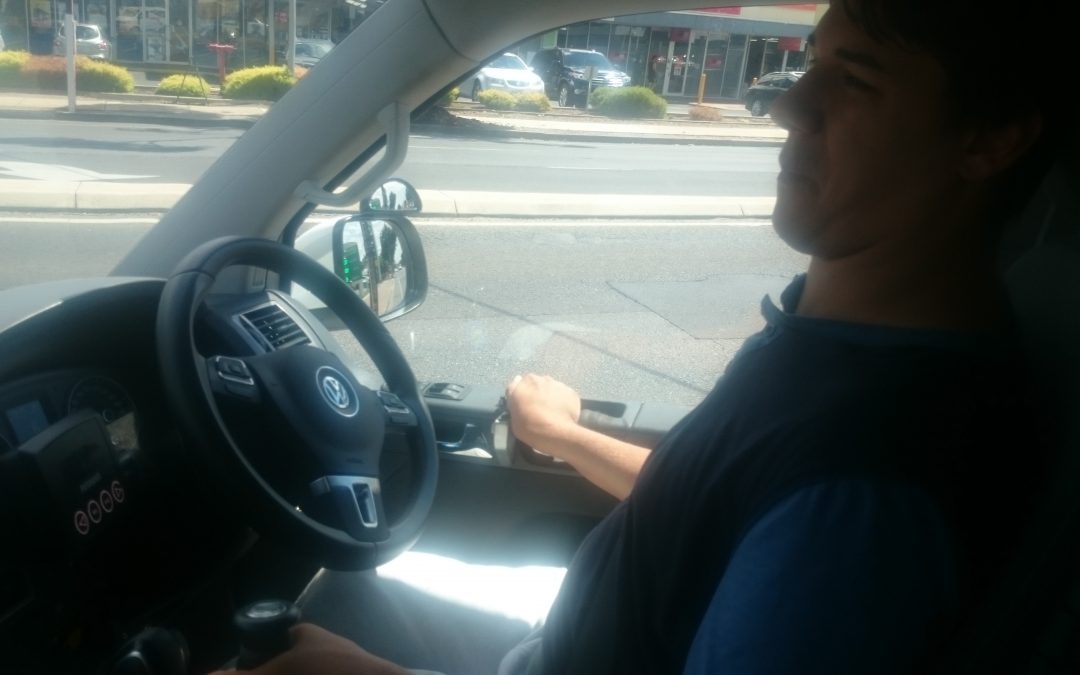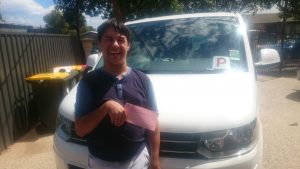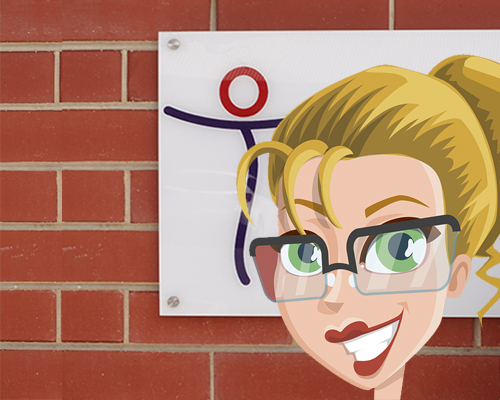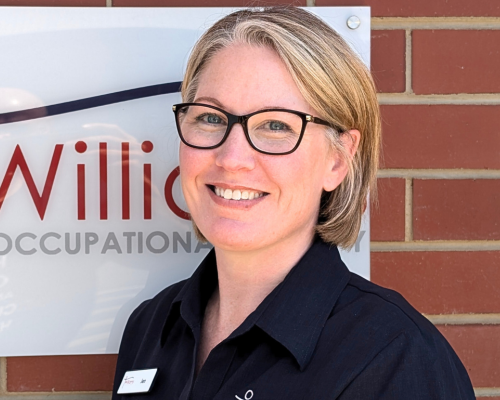Today, we’ll share with you one of our most heartwarming success stories from our client, Nick. Nick has cerebral palsy and driving is one wish that came true. We had a little interview with him and talked about his struggles – how he got his license, his car modification, and driving it. But before we get to that, let’s know more about cerebral palsy first.
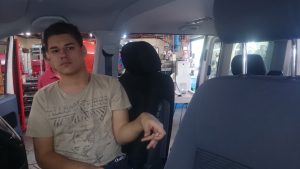 What is cerebral palsy?
What is cerebral palsy?
Cerebral Palsy, also known as “CP” is a neurological disorder that permanently affects muscle tone, motor skills, and body movement in general. The cause of cerebral palsy is a result of brain injury; which occurs during the development of the brain while the baby is still in the womb. To put simply, people with CP varies from one person to the other. CP affects the person’s ability to control their muscles. These may include walking, sitting, grasping objects, speech impairment, to name a few.
So with this in mind, you might be wondering how a person with cerebral palsy can drive?
Read below for Nick’s interview and find out his amazing story.
Brad: G’Day Nick. How are you going?
Thanks very much for talking to us today. It’s world cerebral palsy recognition day coming up on 6th of October and we’ve set up this interview to find out a little bit more about your journey for getting your license and being able to drive.
Thanks very much for joining us today.
Nick: That’s fine, thank you for having me.
B: Can you go into a little bit of detail, just to start off with, to let everybody know listening to this, how we first met?
N: So, I met you through a lady called Laura, who is the manager of my private trust fund. She already knew you before I had won my court case. And because I told her that I really wanted to drive and be totally independent, that’s when Laura recommended you, and to have a chat with you to see what you can do to help me out with my driving and being independent.
B: So, for people listening to this, can you just explain how the cerebral palsy impacts on your life?
N: So, it’s very difficult to explain because there are different stages in my Cerebral Palsy throughout my life. So I thought I should start from the start if that is ok with you?
So, I wasn’t able to walk at all until the age of seven years old. I was walking on my hands and knees up until that point. It wasn’t until my very first leg surgery that I was able to stand up on my legs and able to walk properly.
At the age of seven up to the age of fourteen, I was gradually getting better at walking and talking and moving. But then because of my CP, and the way I walk, I developed severe scoliosis.
By the age of fifteen, it was so bad that I couldn’t walk anymore, and I went back to walking on my hands and knees at the age of fifteen. I had to have surgery right then and there, because, if it would get any worse, it would eventually kill me, apparently. So I had to have surgery.
After that surgery, after having rods and pins in my spine, I haven’t been able to walk anywhere near as well since. I have to use an electric wheelchair to get around most of the time for long distances. In my house, I walk with a walking frame.
B: So what is the technical term for your type of cerebral palsy?
N: It’s Cerebral Palsy, Spastic Quadriplegia. It affects both my legs and both my arms and my voice from time to time. I stutter and mumble.
B: Just to let people know, I first met Nick to help him with some home modifications and to try and help him become independent and move out of home for the first time away from his parents. But a huge goal of Nick’s was to become independent in driving. So Nick, can you explain to people why driving is so important to your independence?
N: Well, right at the start, when I was fifteen or sixteen years old, it was kind of out of spite. Some of my friends and parents say that because of my CP that I will never be able to drive. It was only when my school teachers at Unley High convinced me that I should go for it, then I thought, yeah, maybe I should go for it, even if I have been told that I wouldn’t be able to drive. So, I eventually took the test and I passed with flying colours. I got all the questions right.
B: That’s the theory test for your learner’s, isn’t it?
N: Yeah, the theory test. When I was about sixteen or sixteen and a half years old I took that test and, yeah, it was pretty good from there, except for one little speed bump. When I could acquire my permit, I was told I had to get assessed by a doctor, to say that I could drive even though I have CP. So, that little 5-minute conversation took a year and a half schedule. That was just my dumb luck because some bureaucratic stuff happened and I couldn’t get it sooner.
B: What did the doctor’s think when you first ask them that said you wanted to get a medical certificate to say that you are able to drive?
N: The doctors, they are very impressed with my intellect and hand and eye coordination and all of that. And yeah, again, it took five minutes to convince them that I’d be okay to drive.
B: So you got your learner’s, you finally got your medical certificate to be able to drive, and then I know, that before I got involved, you went to a driving school and tried to do a few lessons.
N: I didn’t go to a driving school, I had an instructor go to my house. A special instructor.
B: And he tried driving you with a spinner knob?
N: With a spinner knob and a remote to operate the indicators.
B: And so there were a few issues with that. Do you want to explain what was happening there?
N: Because I was using a gutter frame most of my life, I developed severe bursitis in both shoulders. And because of this, it was quite difficult to steer with a spinner knob because it was quite stiff and heavy. It was just too painful to use a regular steering wheel, even with the aid of a spinner knob. So, I had to look other options.
B: So that’s when we first got involved, with me as the OT side of it all, we looked at what was actually the issue with driving. And through that assessment, we found that you had bursitis. We also knew that you’ve got a fair bit of tone on your shoulders, which made steering a steering wheel around in a circle was quite difficult with both shoulders. One shoulder was slightly better than the other, but in general, it was quite stiff. And, in that first drive we had together, we were on the wrong side of the road quite often because we are trying to get around the corners and we couldn’t get around sharp enough.
N: Yep, exactly.
B: We came to a decision that steering with a steering wheel is going to be really difficult. We went to a doctor and said, “can we do anything about these shoulders to make it better?”
N: The only option, the only good option the doctors gave me was to get a cortisone injection on my shoulders, and even that wasn’t permanent. So, I was looking at pain management, like Neurofen daily. That did nothing at all. I still used to wake up with sore shoulders all the time. Because the cortisone injection was risky, I decided not to go for it. But because there was no permanent fix other than surgery, which I didn’t want to do it either, I decided, “well that’s it, I’m done for” and I couldn’t drive anymore.
B: But I didn’t wanna hear that. We wanted to… I wasn’t happy with you not being able to drive. So we presented you with other options. Some of those options were fairly advanced options. So what was the process that you went through after that?
N: After I found out that it was looking bad for me, I finally discovered a pretty good option for me. PME, Problem Management Engineering, which had the technology to help me drive easily without the issues of the steering wheel.
B: Can you explain space drive technology to the people listening to us?
N: Basically, space drive technology is developed in Germany and it is basically a two-way joystick. Kind of like an electric wheelchair, but it can’t go backwards and forwards unless you need it to. Basically, its got its own brain which tells the steering wheel to turn left and right on its own. So if I turn left on the joystick, the steering wheel will automatically turn that way without me having to touch it.
B: So for the people listening to this, in one way that I can explain how it works, it’s a bit like a gaming console…
N: Like playing play station and playing grand theft auto.
B: There you go. So that is exactly what it is like to everybody listening to this who wants to understand what it is like, “it’s like playing grand theft auto”. Not that we encourage you to drive like that.
So, what was the process that you went through to be able to get and test this space drive out?
N: First of all, I had to be certain that this will be a good option to have because it is very costly. I had to go to Sydney a few times to actually test it out first. That took a few trips initially and then when I finally found out what I was testing there, I then bought a car, I had it shipped to Sydney to get it fitted with these modifications. And it worked out brilliantly.
They even put on the big buttons on the driver side handle for me to use indicators and wipers and other uses from the dashboard that I couldn’t normally reach. And because of the way the joystick is positioned, I had to sit right back with the seat. I couldn’t move forward and use the indicators on the wheel. So, I had to get those modifications as well.
B: And they also put in a handbrake?
N: They did. They put in an electric handbrake. Because of bursitis in my shoulders as well, I wasn’t strong enough to pull up the handbrake normally.
B: So this joystick, you went over to Sydney (just to recap it all), you went to Sydney twice to test it out, and then another trip to get your car modified specifically for you. You got measured up, making sure all the buttons were in the right space; making sure that the joystick was in the right position for you.
There was a couple of really interesting things in there that people should understand. Nick wanted to be able to take his wheelchair with him as well. But Nick’s also got the ability to walk a little bit as well. Can you talk to people about your access to the vehicle? How can you get into the driver’s seat?
N: I do it just like anybody would really. I use a handle above the driver side door to pull myself into the driver’s seat in the front. It’s quite difficult, again, because of my bursitis. It requires a bit of strength to pull myself up into the driver’s seat. But that’s for when I am using the walking frame. If I’m using the wheelchair, I pull down the electric ramp at the back of the van and I drive in. I unbuckle myself from the wheelchair, I get out of the chair and step into the driver seat from the back of the van.
B: You go through the centre between the two seats in the van?
N: Yeah, the joystick has a special function where it could swing away because the joystick is situated right in between the two front seats of the car. I push a button to swing the joystick away so, I can get into the driver’s seat properly from the back of the car.
B: Which is fairly unique. And your walking frame? When you get into the car with your walking frame, what do you do if you use the walking frame?
N: I had another modification done, in which we put a crane on the side of the car, on the driver side of the car, which would lift my walker into the van for me. So if I needed to walk, I didn’t have to physically hold up myself and go through the strain of lifting it into the car. The crane would do that for me.
B: So it’s a fairly big walking frame. Just to let people know, it’s a gutter frame for people listening to this. So that means you can take your frame with you and your wheelchair with you at the same time.
N: Not at the same time.
B: They kind of impact on each other don’t they?
N: Yeah that’s’right.
B: So, you got your car modified, it was all measured up specifically for you, and then you took delivery of your car. What was the process that you had to go through then? Because it was a little bit different than a normal learning process, wasn’t it?
N: So, when I finally got back the car from Sydney, they sent one person with me to stay, specifically to teach me how to use the remote controls. That was 80-plus hours on top of the regular learners permit. Instead of just going through your regular, 100 hours. On top of the 100 normal hours that you learn how to drive, I had to have 80 extra hours just to learn how to use the special controls.
B: Because they’re pretty touchy and pretty unique and take a fair bit of getting used to?
N: Yeah, that’s the thing, it’s very sensitive. So, if I would just tap the joystick, half the wheel would turn around. So, it takes a long long time to learn how to properly use it, in micro-movements.
B: You went through the learning process; you had your lessons; you had specific lessons learning how to use the controls, and then you got your license. What did that feel like, getting your license?
N: It was such a relief, Brad. Like seriously, I was on cloud 9, you know. I would, literally, with the wheelchair, go wherever I wanted, when I wanted, and however I wanted. And no one could say “Boo” about it.
The first trip, literally, that I did was to go to Whyalla with my father. It was a very long 5 hour there and then back. And I was happy that I could drive that far without getting too fatigued.
B: And tell people about some of the activities that you do in your car now? So, I know that you are heavily involved with scouts. Can you explain…
N: I used to be.
B: So, not anymore?
N: I’ll get into that later. But… I’ll tell you why. Yeah.. Now I had my car, I could properly join my scout group, which I had previously. But I could finally not rely on any of my former scout crew that had to come down all the way from the Hills to pick me up and then all the way back again. I could just drive up there myself and then back again by myself.
B: Yeah, and take the wheelchair with you and go on outside adventures……
N: That’s why I wanted my wheelchair with me in the car. Because I go on camps and scouting all around Australia I needed a big bulky wheelchair to get me from A to B. And the only way to do that was to use the van.
B: And I know you also had the scout party bus there for a little while, sometimes.
N: Yeah, I had, like, 7 people in the van.
B: That’s good fun. So you got your license; you learned how to drive in a special way; with the special joystick which didn’t impact on your shoulders anymore; you had to learn how to control your muscles for your legs as well – we haven’t touched on that but you use normal pedals.
N: Yep, normal pedals, and I have to drive an automatic car. Because I cannot drive a manual car. It’s too…
B: The hand’s stuck on the joystick. What it meant was that you are able to be free of other people…
N: I finally didn’t have to rely on taxis. I hate taxis. I hate public transport. I took public transport every day, twice a day, for 5 years straight and I thought that’s enough. I had to get my licence. I had to get my car already. I’m sick of relying on other people, who baby me around basically, and I was finally relieved that I finally got my independence.
B: That’s great. Is there anything else you wanted to tell us about what driving means to you? I know you have had a bit of a mishap. Just because you’ve been through all the process it doesn’t mean that you going to stay accident-free. I know …
N: Yeah, I mean, when I got my license, my instructor told me that usually, within the first 8 months of getting your license, you are going to have your first car accident. And he was right. I had my first car accident New Year’s Eve last year. That was quite an upsetting time. It was purely because I slightly lost concentration for just a second. And like I said before, because the joystick is so sensitive, if you hit a small bump, it would turn like crazy. So you have to be very careful not to hit anything, otherwise, once you hit, it [the steering] just goes crazy.
B: Is there anything else that you want to tell people for world cerebral palsy day? Is there anything else you want to let people know?
N: You know, there are HEAPS. I just don’t know how to concise it all. There are tons of it
B: What about for driving? Is there anything specifically for driving?
N: Don’t let anyone tell you that you can’t do something. I was so sure that I couldn’t drive because people were just telling me that I couldn’t. But I proved them wrong. So please don’t let your parents or any of your friends tell you that you can’t do something. Because there’s always a solution out there, and if the first solution doesn’t work, then you can just try again.
B: That’s a great way to finish it, I reckon, Nick. Thank you so much for agreeing to share your story with everybody. I hope that people get inspired. If they’ve got cerebral palsy and they have been told that they will never be able to drive, then your story might be an inspiration to them. And I hope that someone can get something out of this and you can inspire somebody else. Thanks very much
N: Yeah, I hope I do yes. thank you.
You can also listen to his interview below

